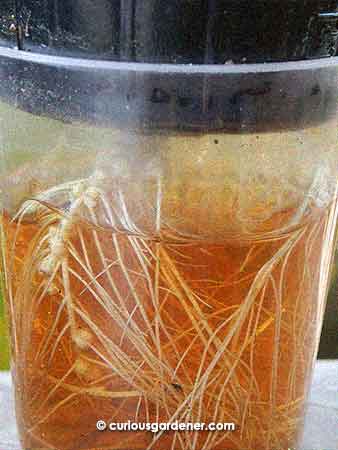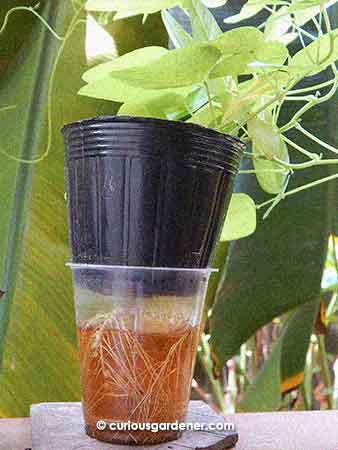We’ve all heard about how leguminous plants have nitrogen-fixing capabilities – they have symbiotic bacteria known as rhizobia in nodules in their root systems that produce nitrogen compounds that help the plant to grow and compete with other plants. When the plants die, the nitrogen is released and made available to other plants, thus helping to fertilise the soil.
I always thought that this happens only within the soil, and was surprised to see rows of ball-like nodules along the roots of my young winged bean plants that happened to be growing in water.
The background to this is that I was trying to keep my winged bean seedlings well watered by placing the pot above a cup filled with water. This is my quick method to make a self-watering pot, you see. Just water the plant well then fit the base of it into a water-filled container; the water will first seep into the potting mix above, and if the water level falls too low, the water will evaporate and still get to the roots above. If left alone long enough, the plant will send roots down into the reservoir below, which is what happened here.

A closer look at the nodules on the winged bean roots – does this not make you think of a curved spine and ribcage?? By the way, the water is discoloured because it first drained through the potting mix and into the reservoir below.
So, thanks to this, we have now seen the infamous leguminous nodules growing along the plant roots – which remind me of a creepy spinal cord, for some reason… The plants have since been planted in the garden, and don’t look as happy as they did when they had the direct access to water. It’s making me think a little more seriously about hydroponics and other ways to make water more available to the plants…
© 2015 curiousgardener.com All rights reserved.

